Cyborgiversary
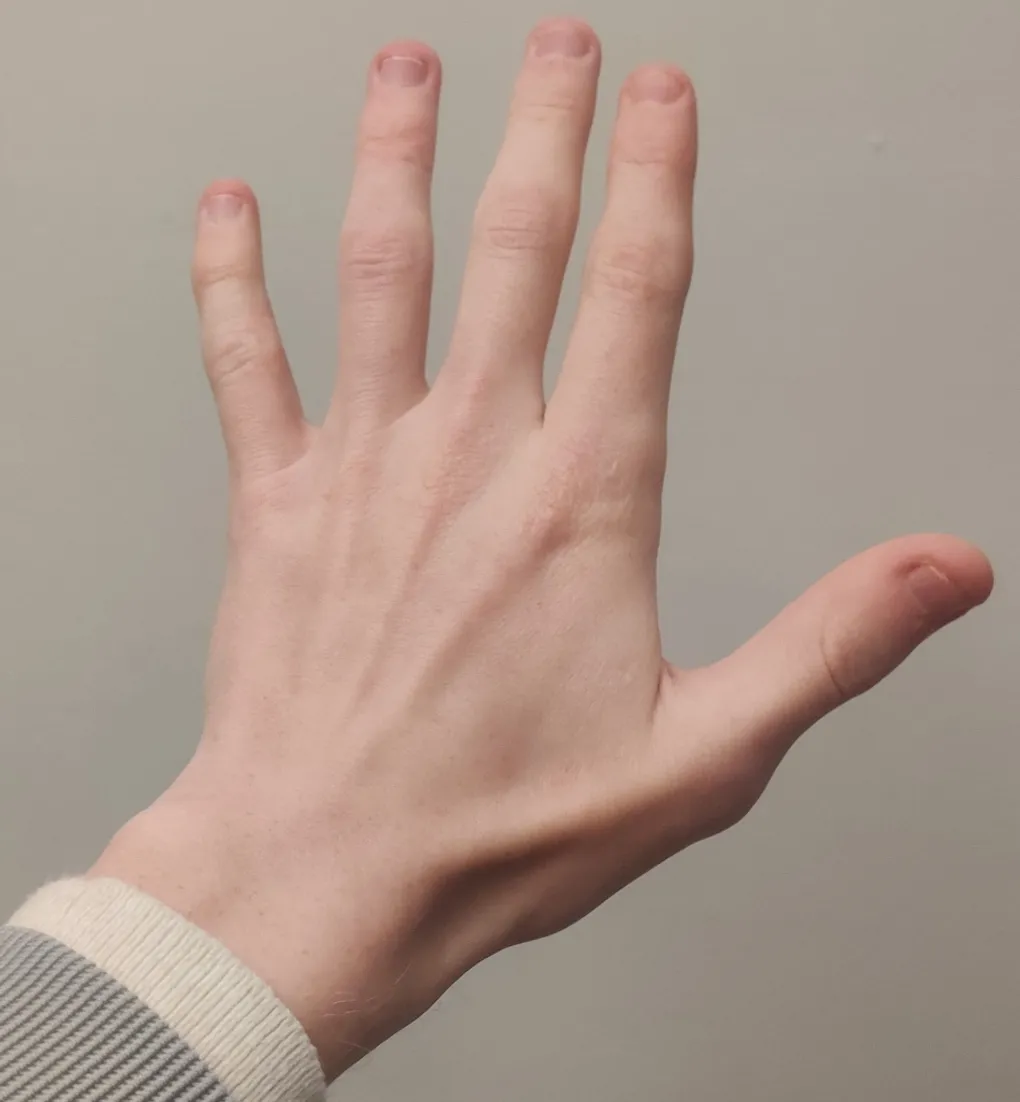
Something is unusual about my hand (besides the awful nails), see if you can find it before the last image where it’s circled in red.
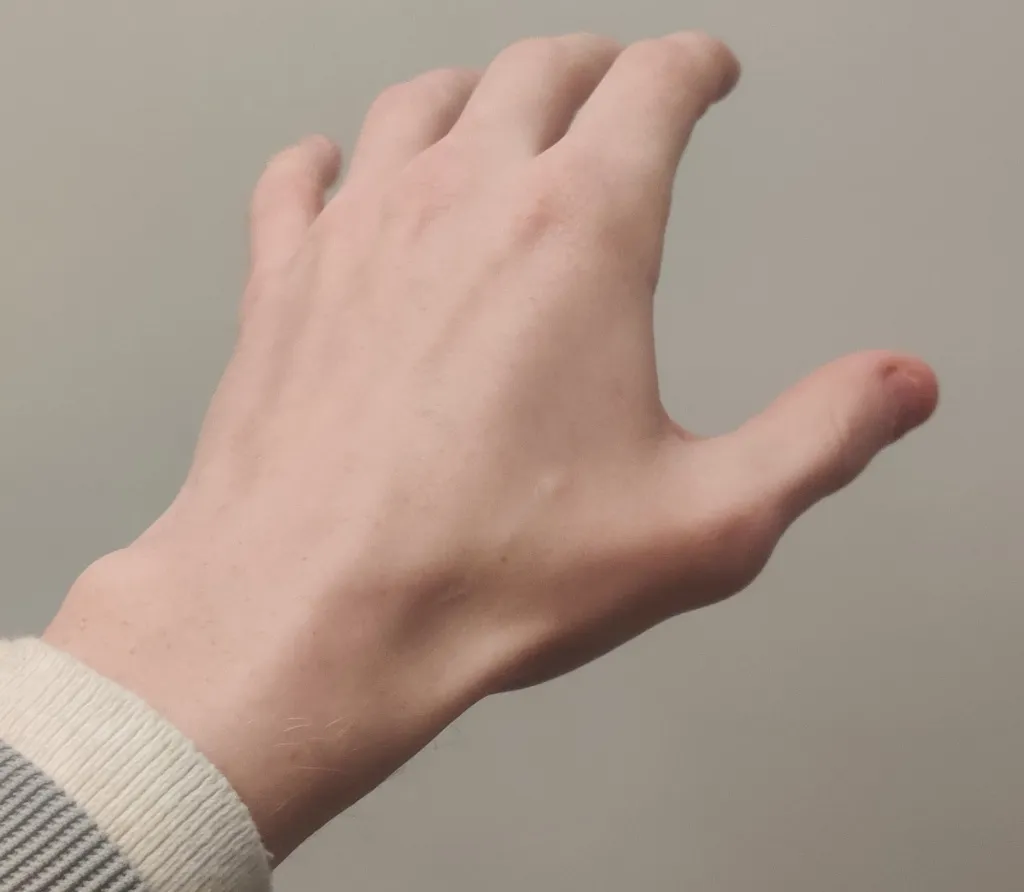
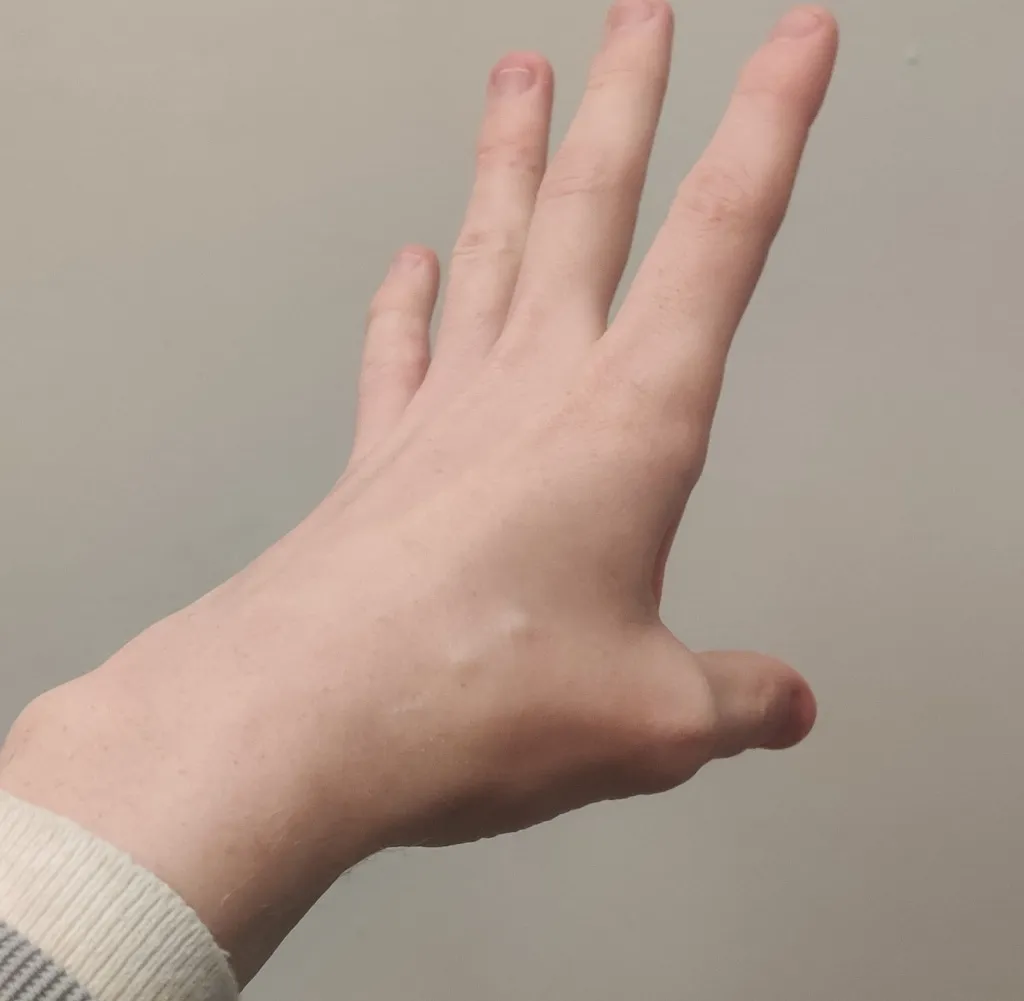
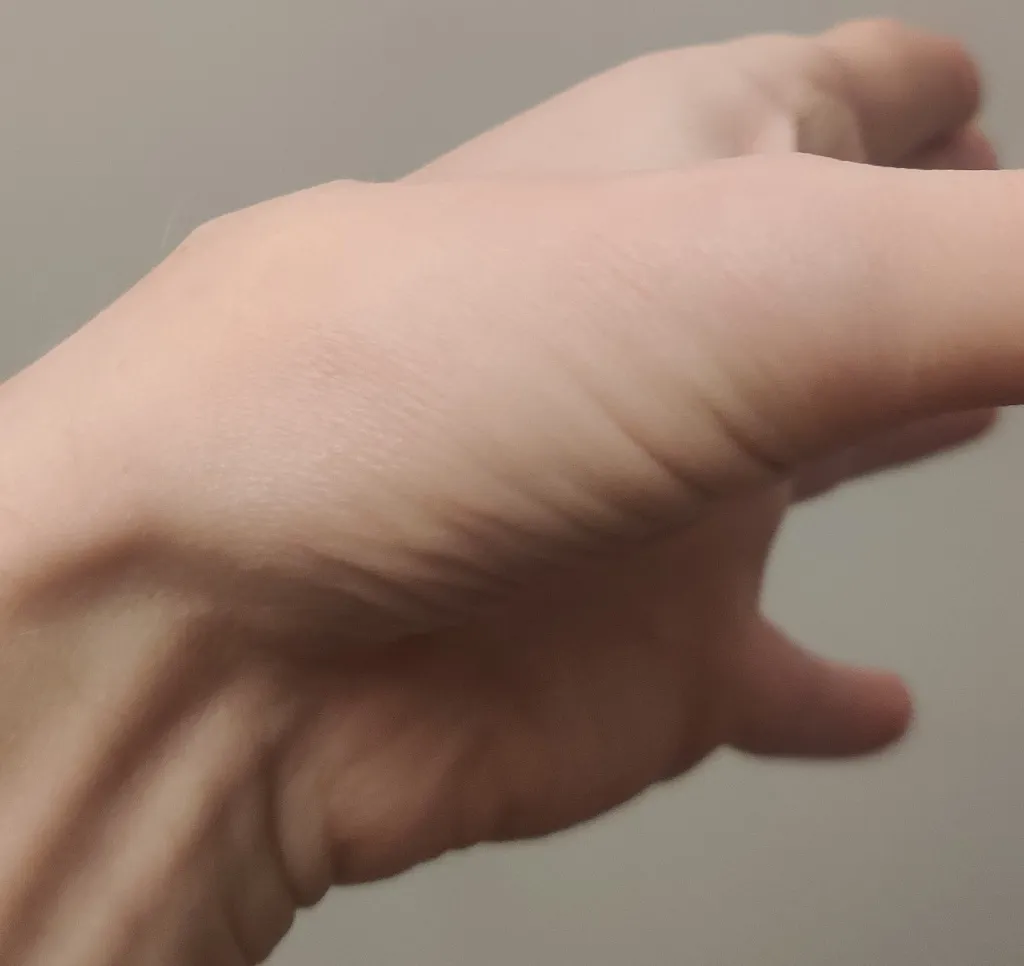
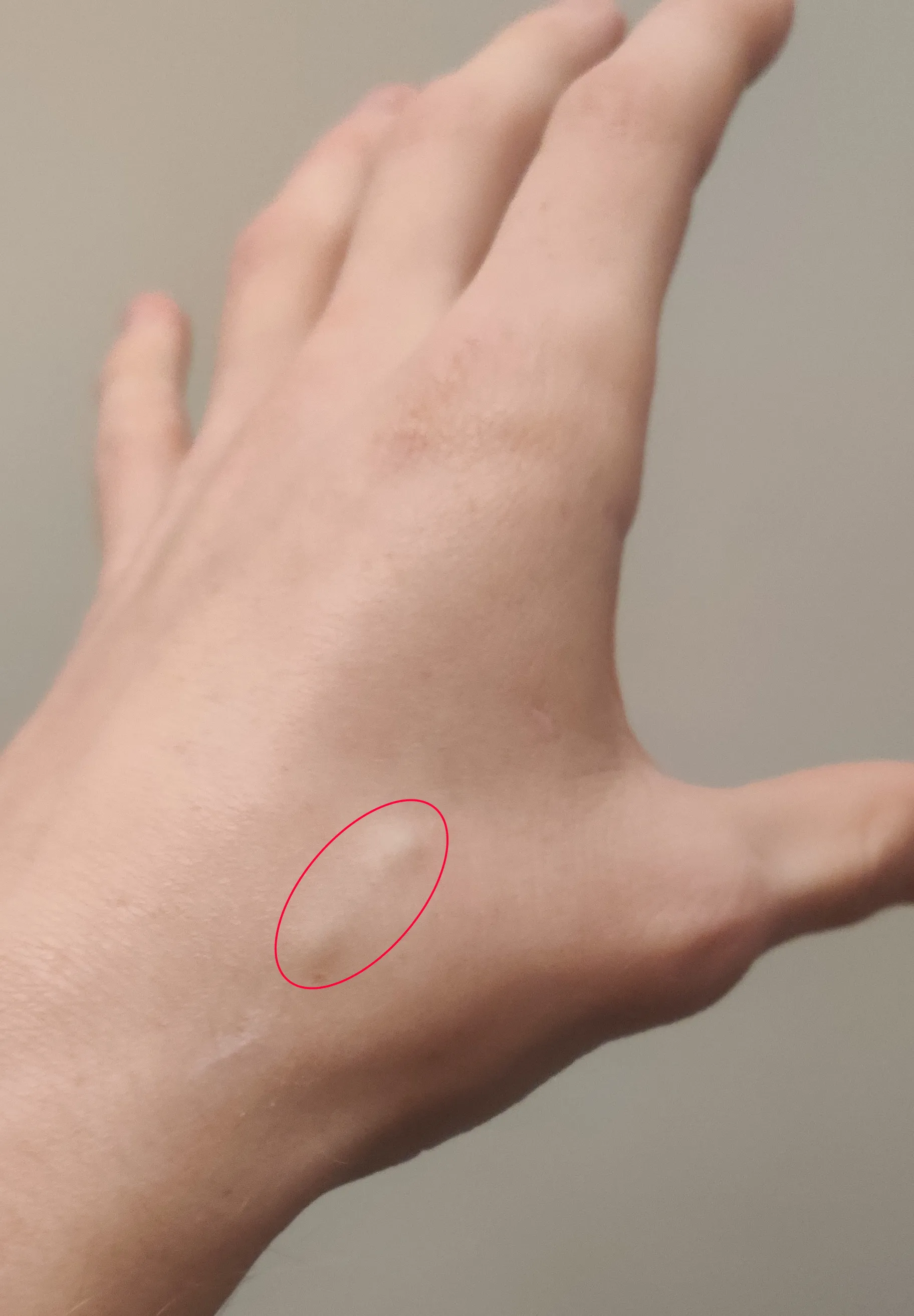
It’s a tiny cylinder of glass, 2mm diameter by 12mm, with some electronic chips inside: https://dangerousthings.com/product/next/
I got it implanted a year ago to the day, so it’s my cyborgiversary! I don’t actually think I’m a cyborg, it’s just fun to say, and has a nice shock factor to it. I think most people would probably consider me a cyborg though, so maybe I actually am by majority rule.
But there’s really not much different from my implant than tattoos, piercings, or medical implants. The first two have been around for thousands of years, and none of the three are particularly strange now, even across class and gender divisions (there are always hold-outs for the “traditional ways”, but times have already changed for the most part, at least in the US). Tattoos and piercings are mostly aesthetic and cultural, without function - that culture being at any and all levels from personal to global. Medical implants are functional-only in the vast majority of cases, entirely divorced from culture.
Chip implants are in an interesting middle ground - functional and cultural. I don’t think there are very many people who get a chip implant and don’t interact at all with the “biohacker” culture surrounding them, and also very few people who get a chip implant only because of cultural or personal expression reasons and don’t use it at all.
As for actual capabilities, they’re not particularly impressive. I basically just have two of these in my hand, one each for RFID and NFC. RFID is mostly used for access control to activate things that you’d usually carry an access card around for, and NFC mostly to do simple things on smartphones, like pull up a link or pop up a message on screen. There are other types of implants, ranging from financial/payment to LEDs to magnets to temperature sensors, and various more interesting and less proven offerings outside of the “consumer” realm (I’d estimate that Dangerous Things has sells mid triple to low quadruple digit implants yearly, so they’re not exactly Facebook).
But none of them are magic. The only time the electronics in mine are active is when they’re millimeters away from an antenna that is scanning them, because they don’t have any internal battery, instead being powered entirely from transmitted power of the scanning antenna. I can’t get into anywhere that I didn’t already have a key card for. I can’t hack into any locked phones or even cause much of a threat to unlocked ones other than linking them to a virus-infested site. And there’s definitely no one tracking or controlling me in any way. The first one is much closer to reality than the second, but a big hurdle that stands firmly in the way of any active implanted electronics is the current lack of biocompatible batteries. Batteries tend to outgas which poses a problem for keeping them in sealed glass capsules, and more broadly stored energy likes to releaseitselfsporadically in ways that would not be exactly comfortable or healthy were it happening under your skin. (This is a hurdle that has been cleared in some medical contexts like pacemakers because of an orders-of-magnitude funding difference between medical and non-medical implants.)
For most implantables, there are wearables that can do the same job without sticking anything into yourself. My implant could just as easily be a ring and it would actually work better because of the larger antenna size - I have to smush my hand against the scanning antenna for any hope of the chips being read, and even then I need to wiggle my hand around a bit to find the right position.
So why get an implant at all?
There are some meager functional benefits. I can misplace a ring, just like I frequently misplace my wallet, but I can’t misplace my hand! For a semester, I lived in a dorm where I needed an access card to get into my room, and many a time my implant saved me a walk down to the reception desk when I left my wallet in my room. If I’m ever at any type of conference or convention in the future, I can pop up links to a website or profile with a wave. Maybe most importantly, I can rick roll friends with my hand.
But I also just like it. I enjoy the feeling of autonomy that it reinforces; that my body is mine to do whatever I want with it; that I can take personal responsibility for the risk evaluation that is usually placed on doctors (see the addendum about this at the end of this post). I like that it makes me think about the future. It just plain feels cool.
It’s interesting to me that many people are taken aback by my implant, many that would probably also be taken aback by the decision not to get a medical implant. The risks are really no more than an ear piercing, and it’s much less noticeable than one. I can’t feel it at all. I think the reason it gets a reaction is that it is functional in a non-medical way. It extends functionality instead of replacing it.
But should it?
I don’t really see my implant as any different than cars, computers, or airplanes, which also clearly extend functionality. But no one thinks twice about these things. Why are extending general functionality and replacing bodily functionality both normal, but extending bodily functionality is not? The body might be sacred to some, but it can’t be that sacred if you’ll put a pacemaker or titanium rod in it when push comes to shove.
I’m looking forward to modifying my body more in the future, in conventional and unconventional ways. I think it would be a waste of a perfectly good meat suit to not try to spruce it up a bit before it’s defunct.
Addendum: Broad bodily autonomy
I fully respect those who do not want anything “unnatural” in their bodies, even lifesaving medical interventions like pacemakers. Bodily autonomy is important for everyone, not just people who do want to modify their bodies.
Addendum: Health impacts
This is something that is most people’s concern after “that’s really weird” - it was definitely mine when I heard about it. As far as I know, no non-medical implants are approved or sanctioned by any government agency or medical practitioners, so it is definitely “at your own risk”. However, that risk isn’t really any greater than an ear or face piercing.
Much of the following is about my specific implant type, but most of it applies to implants generally.
A large variety of tests have been performed on the implant type encompassing mine. It arrived in a syringe, which was pre-sterilized and sealed inside packaging, only opened very shortly before it is used. It is easily removable from wherever it is implanted/installed in the rare event that it cracks, stops working, or causes medical problems (which is extremely unlikely because the glass housing is completely inert biologically, and not “seen” by the immune system. I have not read any accounts of infection or rejection issues from installations by experienced piercers.)
As for breaking and shattering concerns, I haven’t smashed my hand very hard in the year I’ve had the implant, but I have read accounts of people who have done everything up to and including literally smashing the implant with a hammer, and haven’t heard any accounts of the glass housing ever breaking (although the last time I looked was a year ago). There are very limited accounts of electronics ceasing to function, partly from user error and partly not (I don’t think my specific implant would be simple to brick even if I was trying), but having to remove or replace an implant isn’t really an item of concern when contrasted with removing hundreds of tiny glass shards from your hand.
Anecdotally, the only pain, discomfort, or even inconvenience that I have been caused is when getting stuck with the needle in the first place. It’s kind of a dauntingly large needle compared to normal medical needles, but the pain wasn’t that bad, not even really noticeably worse than getting vaccinated or having blood drawn. I do have a tiny scar from the installation, in the circle to the right of the implant:
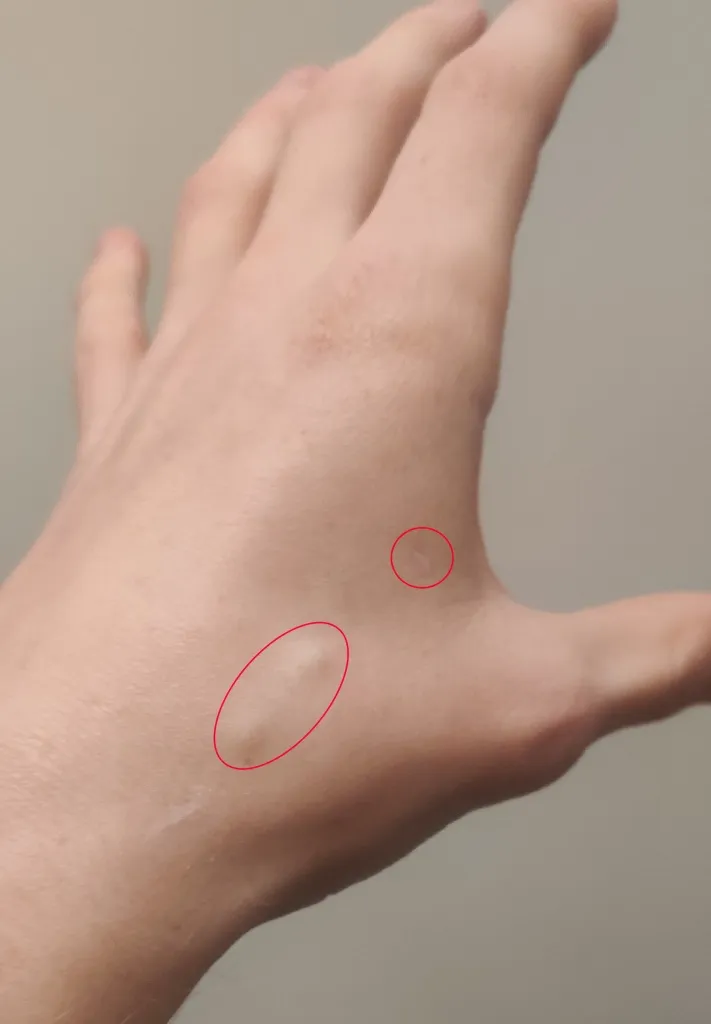
It is located just under the skin and resting on the muscles/cartilage, so I can shift it around a decent amount. I can push it about 25% of its length side-to-side, up to about its full length axially depending on the position of my thumb, and tilt it up maybe 30deg by pushing down on either end. I feel almost nothing from doing this, other than what anyone feels if they gently press on one hand with the other. There is a slight feeling of pressure against the muscle/cartilage when pressing the implant down into my hand, and an interesting sensation that I assume is the separation and recombination of muscle fibers when moving it side to side while pressing down on it. No matter how I move or press on it, even laying against a hard surface and my other hand pressing with full force, there is no implant-caused pain.
Note that attention to medical concerns will vary drastically depending on the source, which is one of the reasons I bought from one of the largest, if not the largest, non-medical implant companies, and had it installed by a piercer familiar with the brand. There are also more medical concerns with larger implants.
Most implants won’t have enough metal to really stick out on any sort of security scanner (not that they are illegal anyways), or cause any problems during medical procedures like MRIs. Magnetic implants might be different in both cases, but even then anecdotally you’ll be fine. (Magnetic implants are very interesting, adding a way to pseudo-sense magnetic fields, and I don’t think it will be long before I have one myself.)
There are risks involved in everything. For chip implants and my personal level of risk tolerance, there doesn’t seem to be anything worth worrying about.